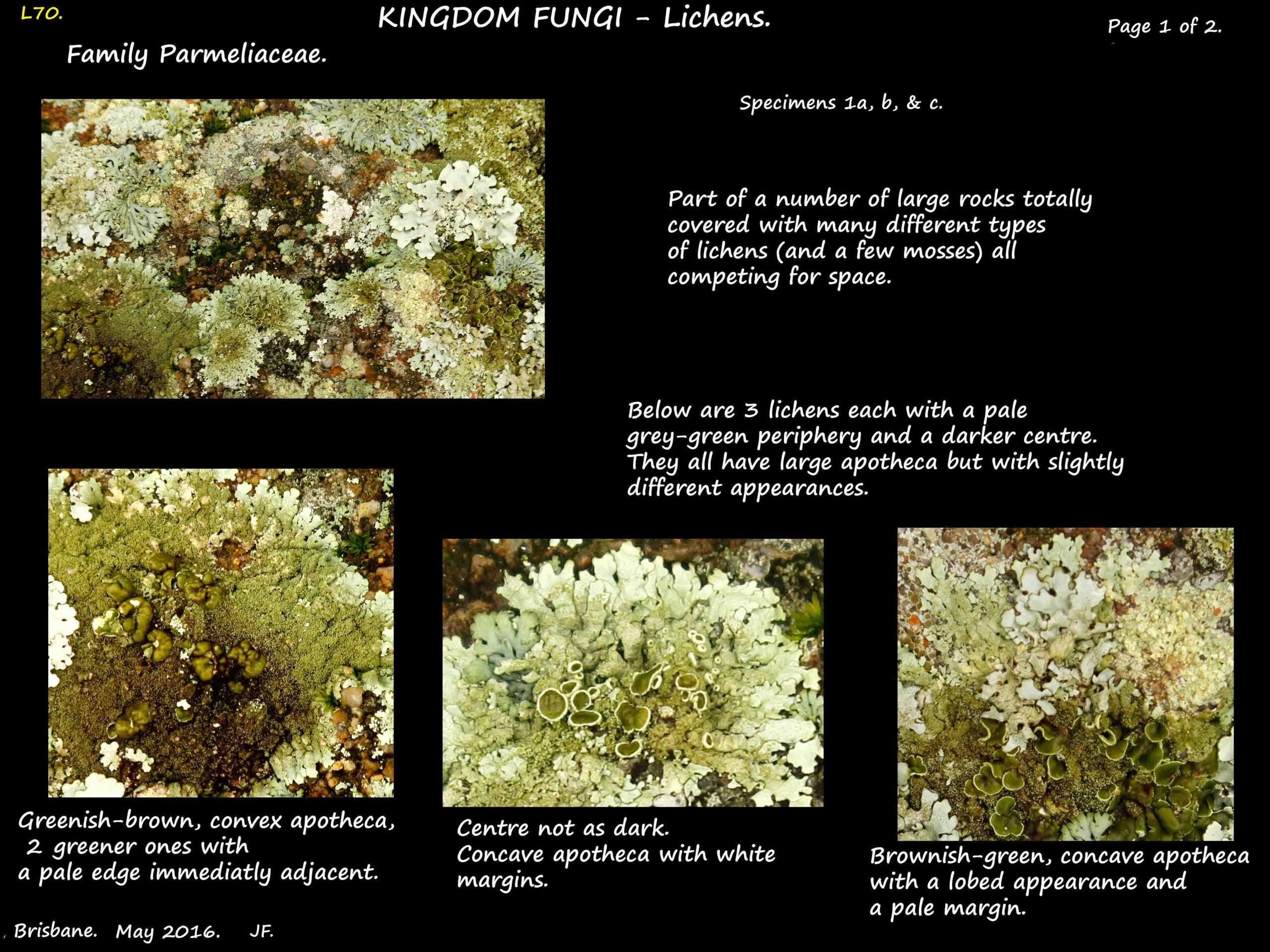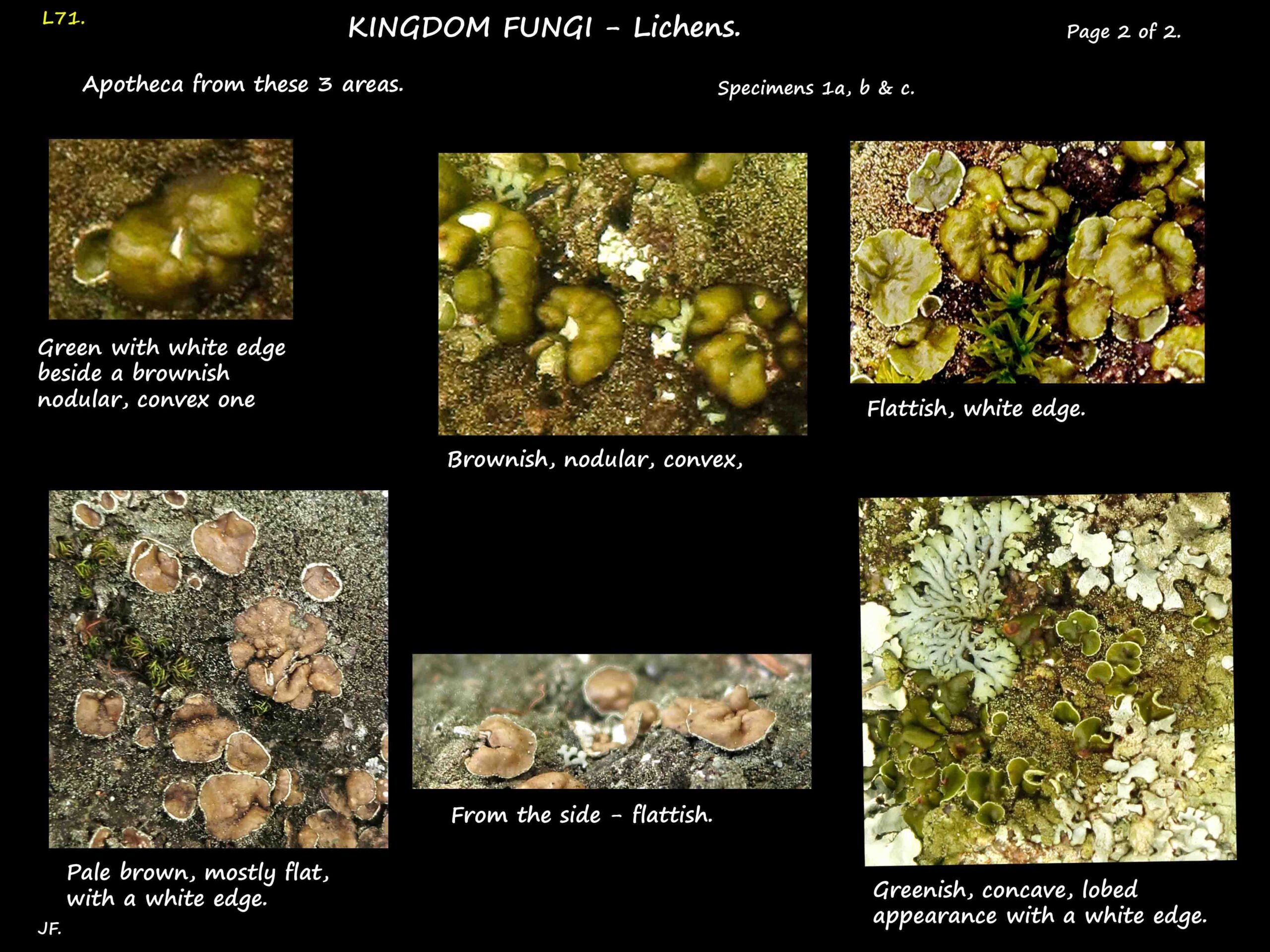Family Parmeliaceae.
Ascomycota > Pezizomycotina > Lecanorales > Parmeliaceae.
There are 54 Genera including Flavoparmelia, Parmelia, Parmotrema and Xanthoparmelia.
Parmelia.
Parmelia is a large genus of medium to large, circular foliose lichens some growing up to 120 cm across.
They grow mainly on bark with some on rocks or mosses.
The upper surface may be brown, yellow, grey or bluish-grey.
The lobes are narrow and touching each other but rarely overlap and the tips are squarish.
The surface has a pattern of white lines.
There may be white areas (maculae) where the photobiont is absent giving a spotted appearance.
The central portion may die leaving a ring.
The lower surface is usually black and is loosely anchored by simple, black rhizines.
The surface may have apotheca, isidia, soredia or pycnidia.
Apotheca are round or cup-shaped, usually sessile but some have a short stalk.
They have a prominent thalline margin around the disc which may be a pale to dark brown or grey.
Flavoparmelia.
A common lichen in Australia with 13 species growing on bark, dead wood or rocks.
They are foliose lichens with round thalli up to 20 cm across that are loosely to tightly attached.
The upper surface is green to greenish-yellow and may be smooth or wrinkled.
The lobes, up to 8 mm wide, are usually rounded.
The lower surface of the thallus is black with sparse to dense, usually simple, rhizines.
There is a narrow brown margin free of rhizines.
There may be isidia or soredia on the upper surface.
Ascomata (fruit bodies), up to 10 mm wide, are usually attached to the thallus without any stalk.
They are round and cup-shaped with a prominent greyish thalline margin.
The disc is dark or reddish-brown, but in some areas there may be a very thin layer (the epithecium)
which is a brownish-yellow.
Xanthoparmelia.
The largest genus of lichens with about 750 species with about 300 in Australia.
Distinguishing between species involves chemical tests as well as appearance.
They grow on rock and occasionally wood.
The thalli are from 1 to 10 cm or more across and they often grow in large colonies.
Most are typical foliose lichens being loosely attached but some are crust-like and others have an
aerolate or cracked looking centre.
The thalli are mostly a yellow green but some are various shades of green, grey or brown.
The thallus lobes grow radially and branch and may be closely or sparsely spaced.
Some darken with age leaving the central area greyish or blackish-green.
The lobes may be from 1 to 10 mm wide and the tips may be rounded or squarish.
The surface may be smooth or wrinkled and some have pale maculae.
The lower surface may be black, or light, dark or reddish-brown.
There may be few or many black or brown rhizines which are usually simple but may branch.
The lobes may have isidia (simple or branched) or soredia/soralia.
Apotheca may be dense, sparse or absent depending on the species.
They are sessile, brown to brownish-yellow, disc or cup-shaped with a prominent thalline margin.
J.F.



